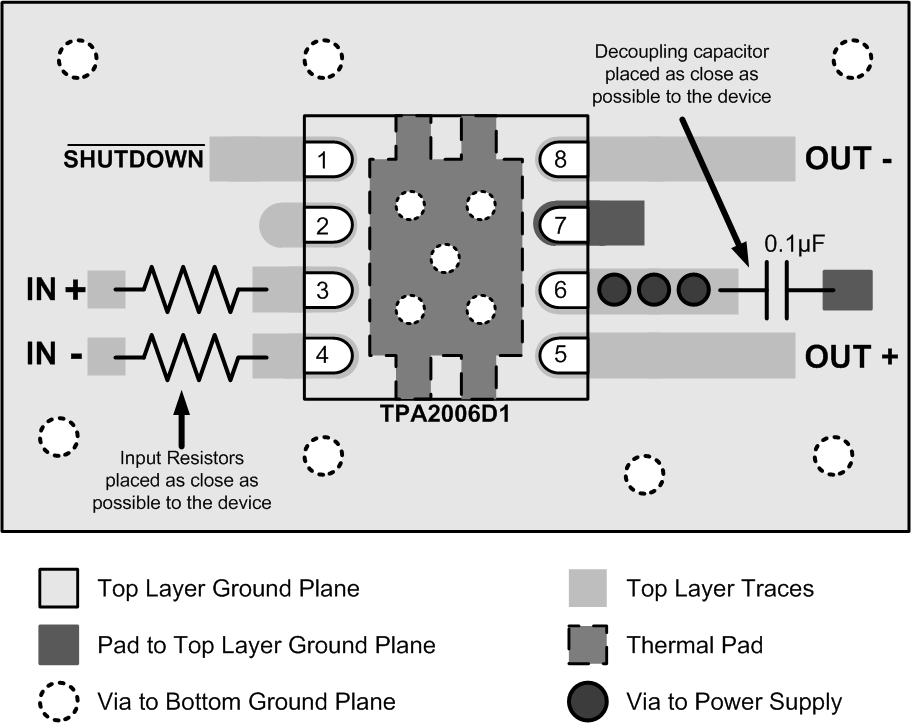SLOS498B September 2006 – September 2015 TPA2006D1
PRODUCTION DATA.
- 1 Features
- 2 Applications
- 3 Description
- 4 Revision History
- 5 Device Comparison Table
- 6 Pin Configuration and Functions
- 7 Specifications
- 8 Parameter Measurement Information
- 9 Detailed Description
- 10Application and Implementation
- 11Power Supply Recommendations
- 12Layout
- 13Device and Documentation Support
- 14Mechanical, Packaging, and Orderable Information
Package Options
Mechanical Data (Package|Pins)
- DRB|8
Thermal pad, mechanical data (Package|Pins)
- DRB|8
Orderable Information
12 Layout
12.1 Layout Guidelines
Place all the external components close to the TPA2006D1 device. The input resistors need to be close to the TPA2006D1 device input pins so noise does not couple on the high impedance nodes between the input resistors and the input amplifier of the TPA2006D1 device. Placing the decoupling capacitor, CS, close to the TPA2006D1 device is important for the efficiency of the class-D amplifier. Any resistance or inductance in the trace between the device and the capacitor can cause a loss in efficiency.
12.2 Layout Example
 Figure 40. TPA2006D1 Device DRB Package Layout Example
Figure 40. TPA2006D1 Device DRB Package Layout Example